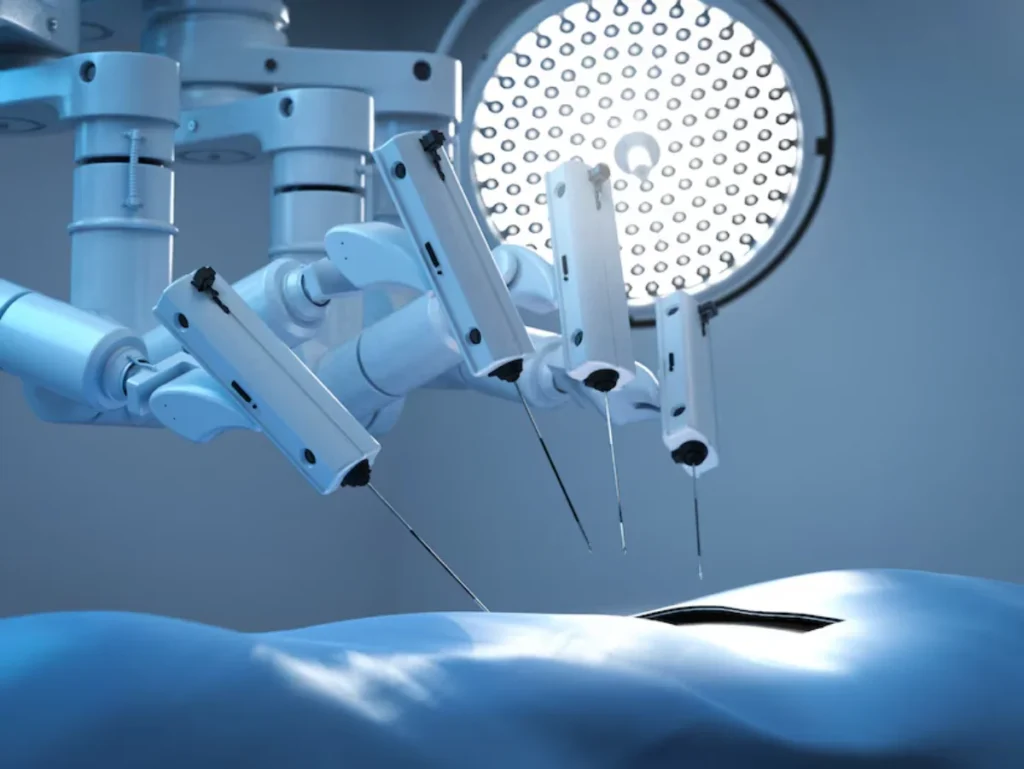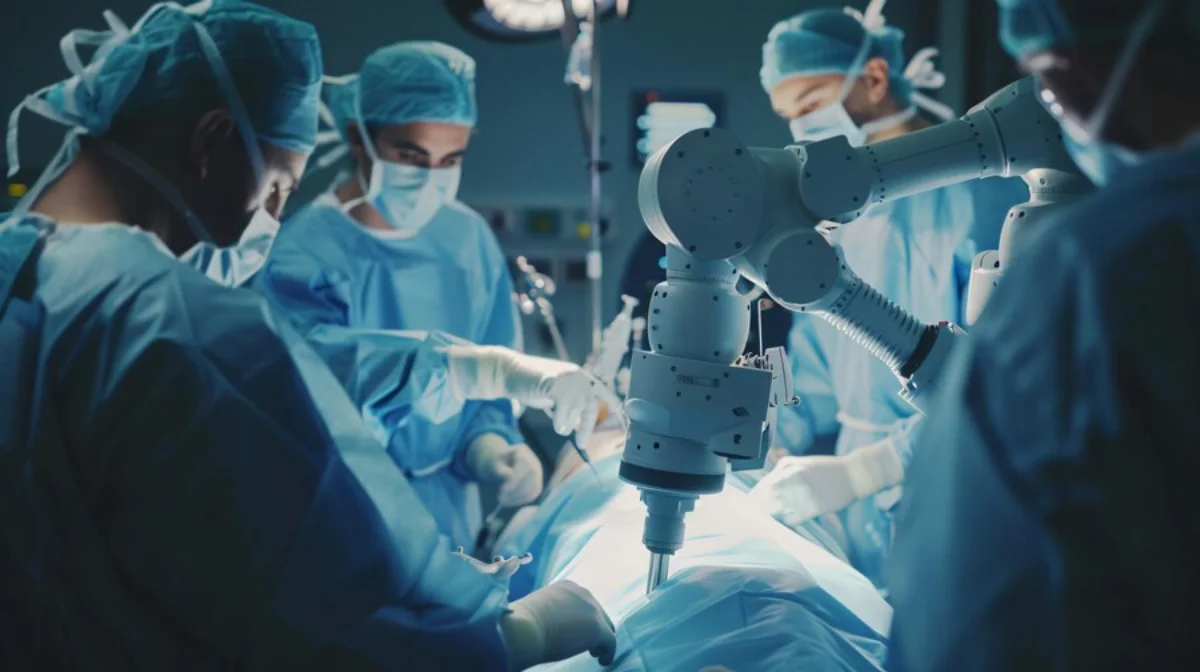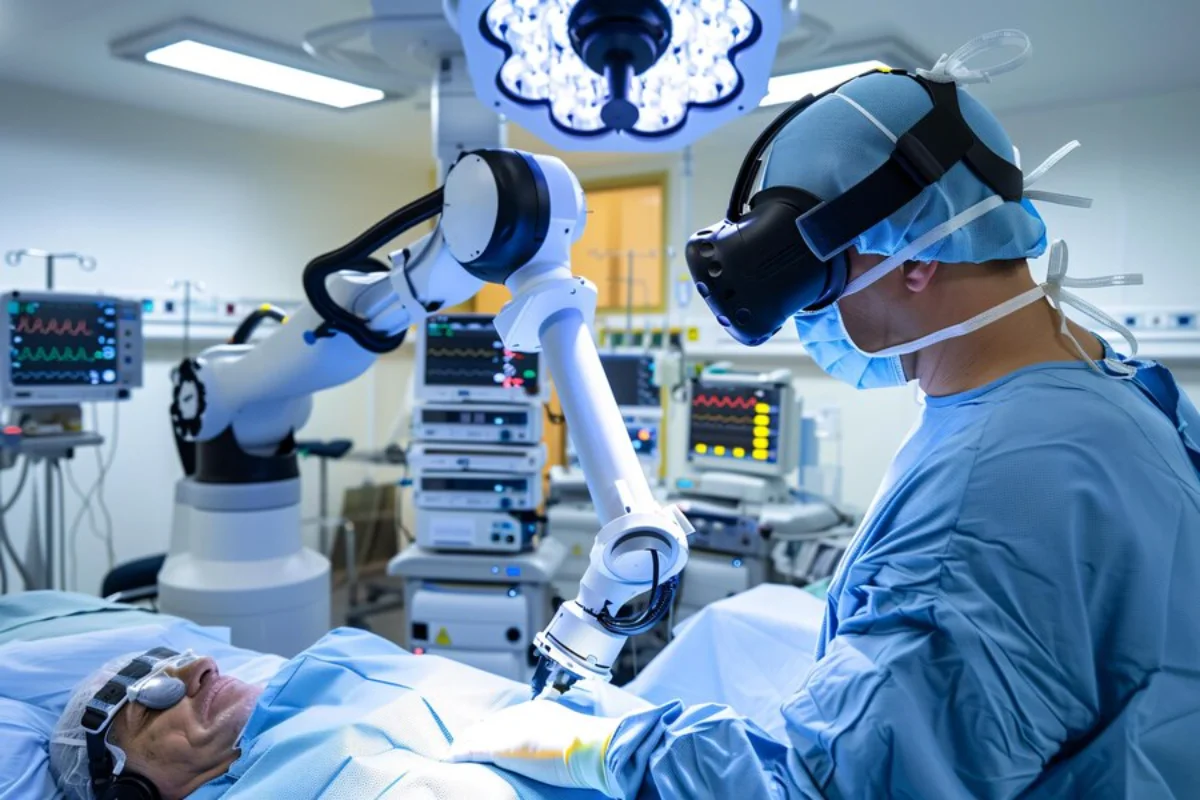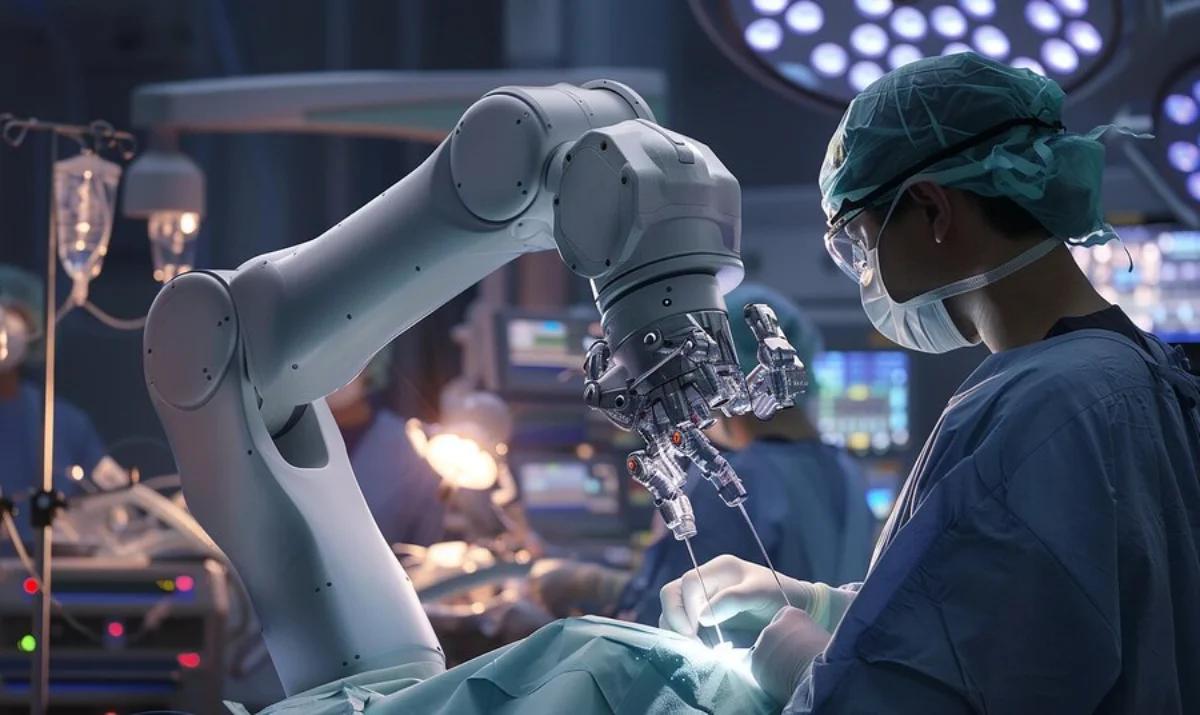The Technology Blog

AI-Powered Robots in Surgery: Future or Reality?
The integration of AI in surgery is revolutionising the medical field, enhancing precision, reducing risks, and improving patient outcomes. As robotic surgery advancements continue to evolve, more hospitals and medical professionals are incorporating medical AI to assist in complex procedures. But is AI-driven robotic surgery the future, or is it already a reality?
This article explores the role of AI in surgery, the latest robotic surgery advancements, the benefits and challenges of medical AI, and what the future holds for AI-assisted surgical procedures.

The Role of AI in Surgery
AI in surgery refers to the use of artificial intelligence and robotic systems to assist or perform surgical procedures. These AI-driven systems are designed to:
- Enhance precision and accuracy.
- Minimise human error.
- Reduce surgical risks and recovery times.
- Assist surgeons in making data-driven decisions.
- Improve patient safety and outcomes.
- Provide real-time imaging and guidance during complex procedures.
- Automate repetitive surgical tasks to improve efficiency.
AI-powered robots are already playing a crucial role in various types of surgeries, from minimally invasive procedures to highly complex operations.

Robotic Surgery Advancements: How AI is Transforming Surgery
The field of robotic surgery advancements has seen rapid progress in recent years. Some of the most notable AI-driven surgical technologies include:
1. Da Vinci Surgical System
The Da Vinci Surgical System is one of the most well-known robotic-assisted surgical platforms. It allows surgeons to perform minimally invasive procedures with enhanced precision and control. The system provides:
- 3D high-definition imaging for better visualisation.
- AI-powered robotic arms that mimic human hand movements.
- Smaller incisions lead to reduced recovery time.
- Tremor reduction technology to enhance stability during surgery.
2. Mazor X for Spinal Surgery
Mazor X, an AI-assisted robotic platform, is transforming spinal surgery by:
- Enhancing surgical planning with AI algorithms that analyse spinal structures.
- Providing real-time feedback during procedures to ensure optimal implant placement.
- Improving accuracy in spinal implant positioning, reducing post-surgical complications.
3. CorPath GRX for Cardiac Surgery
CorPath GRX is an AI-driven robotic system designed for interventional cardiology, helping surgeons perform precise and controlled stent placements. The system benefits patients by:
- Reducing radiation exposure for both patients and surgeons.
- Improving procedural precision leads to better long-term outcomes.
- Enabling remote operation capabilities for enhanced accessibility.
4. Monarch Platform for Minimally Invasive Procedures
This AI-powered robotic system is used in lung biopsies and other procedures, providing greater precision while reducing the risk of complications. Its features include:
- AI-guided navigation for deep lung access in diagnosing cancer.
- Minimally invasive techniques that lead to faster recovery times.
- Real-time data integration to improve clinical decision-making.
These robotic surgery advancements demonstrate how AI is not just a future concept but an active player in modern medicine.

Benefits of AI in Surgery
The integration of medical AI into surgical procedures provides numerous advantages:
1. Increased Precision and Accuracy
AI-powered robots perform surgical tasks with unparalleled precision, reducing the risk of human error and improving patient safety.
2. Minimally Invasive Procedures
Many robotic surgery advancements focus on minimally invasive techniques, leading to:
- Smaller incisions.
- Reduced blood loss.
- Faster recovery times.
- Lower post-operative pain and scarring.
3. Enhanced Decision-Making
AI-driven surgical platforms use vast amounts of medical data to assist surgeons in making real-time, data-backed decisions. This improves diagnostic accuracy and optimises treatment strategies.
4. Reduced Surgical Fatigue
AI-assisted robotic systems reduce the physical strain on surgeons, enabling them to perform procedures with greater consistency and endurance, ultimately improving surgical outcomes.
5. Shorter Hospital Stays and Faster Recovery
Minimally invasive robotic surgeries often result in shorter hospital stays, leading to lower healthcare costs and reduced risk of hospital-acquired infections.
6. Improved Training and Simulation
AI-powered simulators allow surgical trainees to practice complex procedures in a risk-free, virtual environment. This enhances skill development before performing real-life surgeries.
7. Remote Surgery Possibilities
AI and robotic-assisted surgeries open the door for remote surgical procedures, allowing specialists to operate on patients in different locations via telepresence systems.
Challenges and Limitations of AI in Surgery
Despite its many benefits, AI in surgery faces several challenges:
1. High Costs of Implementation
AI-driven surgical robots and platforms require significant investment, making them inaccessible to smaller hospitals and clinics. The high maintenance and training costs further limit widespread adoption.
2. Lack of Human Intuition
While AI enhances precision, it lacks the intuition and adaptability of experienced human surgeons in unpredictable situations. This can be critical in emergency surgeries that require quick decision-making.
3. Ethical and Legal Concerns
- Who is responsible if an AI-assisted surgery goes wrong?
- How should medical AI be regulated to ensure patient safety?
- How do we balance human oversight with AI decision-making in life-critical situations?
4. Data Security and Privacy Risks
AI systems rely on vast amounts of patient data, raising concerns about:
- Data security breaches.
- Ethical data usage.
- AI biases in medical decision-making that may affect patient outcomes.
5. Surgeon Training and Adoption Barriers
Many experienced surgeons may be resistant to adopting new AI-based surgical technologies due to:
- The learning curve of using robotic systems.
- Trust issues with AI-driven decision-making.
- Fear of AI replacing human expertise in the operating room.
The Future of AI-Powered Robotic Surgery
As robotic surgery advancements continue, the future of AI in surgery looks promising. Here are some upcoming trends:
1. AI-Driven Autonomous Surgery
While current AI-assisted systems still require human control, future developments may lead to fully autonomous robotic surgeries, with AI making decisions based on real-time data analysis.
2. Augmented Reality (AR) and AI Integration
AI-powered AR tools will enhance surgical precision by overlaying real-time patient data during procedures. This will help surgeons visualise internal structures without invasive techniques.
3. 5G-Powered Remote Surgery
With the development of 5G networks, surgeons will be able to perform remote robotic-assisted surgeries from anywhere in the world. This can provide life-saving procedures in rural or disaster-stricken areas.
4. Predictive Analytics for Surgery Planning
AI will continue to improve preoperative planning by predicting surgical risks, simulating potential complications, and recommending personalised approaches for each patient.
5. AI-Powered Nanorobots in Surgery
The use of AI-driven nanorobots for minimally invasive procedures could revolutionise the treatment of diseases like cancer and neurological disorders. These microscopic AI-powered robots can deliver drugs directly to affected areas or perform micro-surgeries at a cellular level.
AI in Surgery: The Future of Robotics in Medicine
The advancements in AI in surgery and robotic surgery advancements have already made a significant impact on the medical field. While challenges remain, the benefits of medical AI in enhancing precision, improving patient outcomes, and reducing recovery times make it clear that AI-powered robotic surgery is not just the future—it is already a reality.
As AI-driven technology continues to evolve, its role in surgery will only expand, leading to safer, more efficient, and more accessible medical procedures. The question is no longer whether AI in surgery will become mainstream, but rather how soon it will become the standard in operating rooms worldwide.
Would you trust an AI-powered robotic surgeon? Share your thoughts in the comments below!









